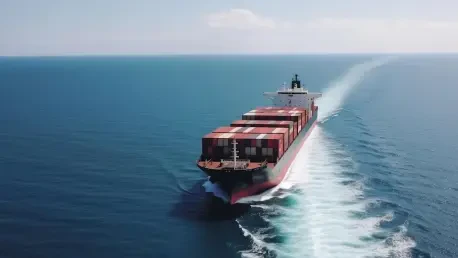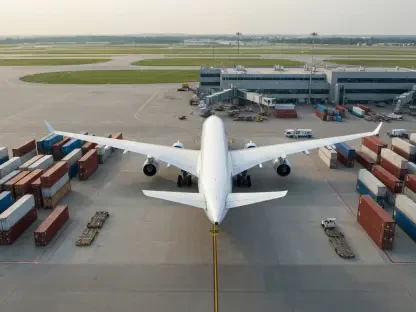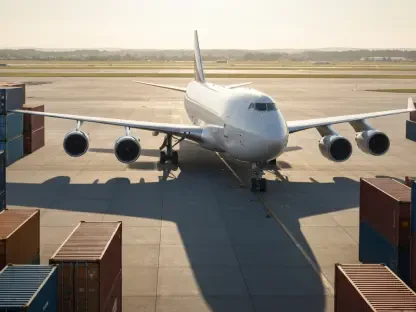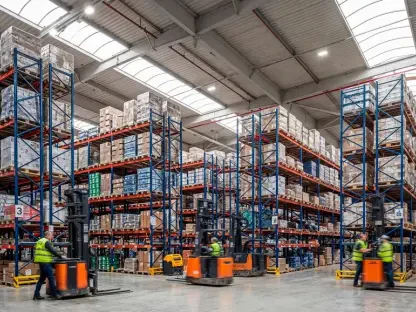Shipping routes in the Red Sea are critical to global trade, yet recent violent attacks on commercial vessels have raised serious safety concerns. The maritime industry, already navigating complex geopolitical waters, now faces heightened security threats. Leading shipping organizations and authorities have expressed condemnation, underscoring the expanding issue of seafarer safety in this region.
Overview of the Red Sea Shipping Industry
The Red Sea remains a vital artery for international trade, connecting Europe to Asia and beyond. It is one of the world’s busiest maritime corridors, facilitating vast amounts of cargo and energy transport. Key segments within this industry, such as container shipping and oil transport, are influenced by technological advancements and stringent regulations aimed at maintaining efficiency and safety. Prominent players in this domain include well-known shipping lines and regulatory bodies. Recent trends reveal significant technological integration with automated systems and data analytics, enhancing operational efficiency. Regulatory frameworks are crucial here, with international maritime laws and safety protocols playing pivotal roles in overseeing shipping activities in the region.
Impact of Recent Attacks on the Red Sea Shipping Industry
Trends and Implications of Recent Attacks
The escalation in attacks on commercial vessels in the Red Sea has emerged as a critical challenge, disrupting maritime operations and shaking stakeholder confidence. Notable incidents involving the Liberian-flagged vessels Eternity C and Magic Seas have highlighted the growing threat to seafarers, drawing attention to geopolitical tensions in the area. Patterns of these attacks, often linked to regional conflicts and political unrest, reflect an emerging trend threatening maritime safety and necessitating immediate attention from global navigational entities.
Shipping Industry Data and Projections
The recent wave of attacks has led to a significant decline in shipping traffic, with the region witnessing a reduction of approximately 60% since early 2024. This decline reverberates economically, affecting global supply chains and maritime revenue. Forward-looking projections suggest a challenging outlook for the Red Sea shipping lanes unless security measures are bolstered. The current climate calls for increased collaborations between maritime organizations and national governments to fortify security measures and reassure commercial entities of the safety of these crucial routes.
Challenges Facing the Red Sea Shipping Industry
Navigating the Red Sea today involves overcoming several obstacles, with technological vulnerabilities and geopolitical challenges at the forefront. Cyber threats teamed with evolving conflict dynamics pose substantial risks to shipping activities. Furthermore, market-driven challenges such as fluctuating demand and competition add complexity. Improving seafarer safety thus requires robust approaches, including investing in advanced surveillance systems and fostering diplomatic dialogues to ensure safe passage. Additionally, promoting international partnerships can help in mitigating risks and enhancing the overall resilience of the shipping industry.
Regulatory Response to Shipping Security Threats
The regulatory landscape for shipping security in the Red Sea is undergoing significant changes in response to escalating threats. International organizations and national governments are working in tandem to formulate robust regulatory standards to enhance maritime security. Comprehensive compliance with these regulations is vital, impacting industry practices and safety protocols in the sector. The integration of security measures with innovative technologies and fostering a compliance culture is not only a regulatory requirement but also a critical step in fortifying the seas against threats.
Future of Shipping Routes in the Red Sea
Although present conditions reflect volatility and uncertainty, the future of shipping in the Red Sea holds potential for growth through technological innovation and strategic market changes. Advancements in maritime technology, like automation and real-time data analysis, promise to revolutionize operational processes, offering new avenues for efficiency. Market disruptors and economic conditions may steer industry dynamics, wherein adaptation and strategic alliances will be key. Promisingly, long-term solutions are being devised, aiming at stabilizing this essential global trade route amidst a transforming geopolitical and economic landscape.
Conclusion and Recommendations
The recent attacks in the Red Sea necessitated an urgent reassessment of existing security protocols and industry practices. Industry players and regulatory bodies exerted considerable effort to address these challenges, advocating for a multilayered approach to maritime safety. Recommendations for strengthening safety include enhancing international collaboration, fortifying security infrastructures, and embracing technological innovations. Sustainable safety strategies, continuous monitoring of geopolitical developments, and assessing future investment opportunities could pave the way for a more resilient and secure shipping industry in the region.









